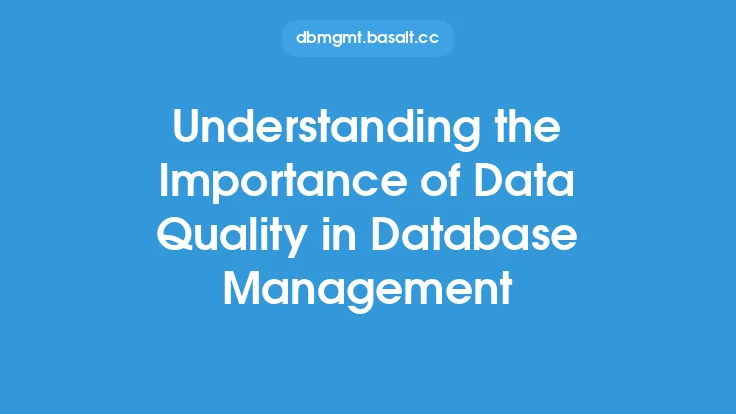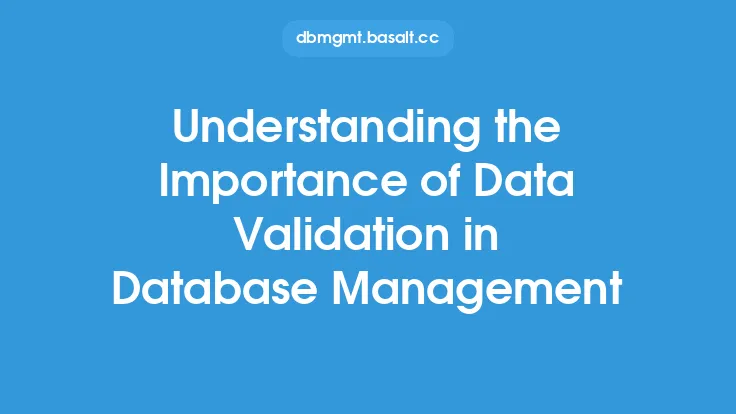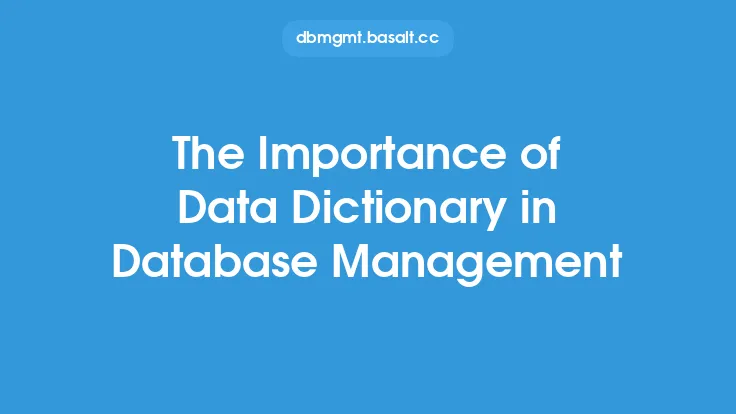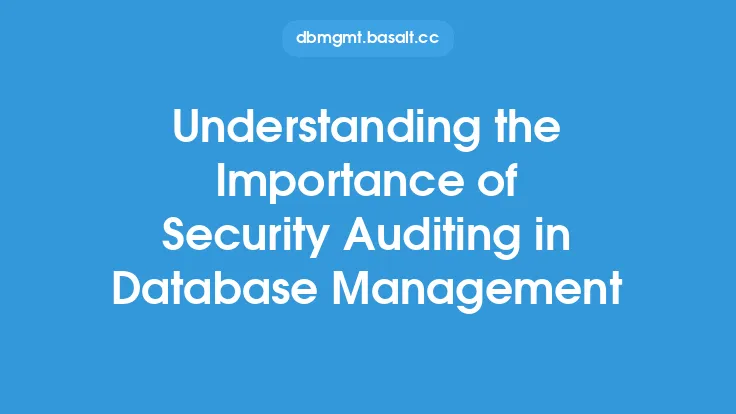Data aggregation is a crucial process in database management that involves collecting and combining data from multiple sources into a single, unified view. This process enables organizations to gain valuable insights, make informed decisions, and improve their overall data analysis capabilities. In the context of data normalization, data aggregation plays a vital role in transforming raw data into meaningful information that can be used to support business intelligence, data warehousing, and other data-driven initiatives.
Introduction to Data Aggregation Concepts
Data aggregation involves using various techniques to combine data from different sources, such as tables, files, or external data sources. The goal of data aggregation is to create a summarized view of the data that can be used for analysis, reporting, and decision-making. There are several key concepts that are essential to understanding data aggregation, including data grouping, data filtering, and data transformation. Data grouping involves categorizing data into groups based on common characteristics, such as customer demographics or sales regions. Data filtering involves selecting specific data elements to include or exclude from the aggregated data set. Data transformation involves converting data from one format to another, such as aggregating data from multiple tables into a single table.
Benefits of Data Aggregation in Database Management
Data aggregation offers numerous benefits in database management, including improved data analysis, enhanced decision-making, and increased data efficiency. By aggregating data from multiple sources, organizations can gain a more comprehensive understanding of their business operations, customer behavior, and market trends. Data aggregation also enables organizations to identify patterns, trends, and correlations that may not be apparent from individual data sources. Additionally, data aggregation can help reduce data redundancy, improve data consistency, and enhance data quality, which are all critical aspects of data normalization.
Data Aggregation Techniques and Methods
There are several data aggregation techniques and methods that can be used in database management, including rollup, cube, and grouping sets. Rollup involves aggregating data from multiple tables into a single table, using a hierarchical structure to summarize the data. Cube involves aggregating data from multiple tables into a multidimensional array, using a combination of rollup and drill-down techniques to analyze the data. Grouping sets involve aggregating data from multiple tables into a single table, using a set of predefined groups to summarize the data. Each of these techniques has its own strengths and weaknesses, and the choice of technique depends on the specific requirements of the organization and the nature of the data.
Data Aggregation and Data Normalization
Data aggregation is closely related to data normalization, which involves organizing data into a structured format to minimize data redundancy and improve data integrity. Data normalization involves applying a set of rules to the data to ensure that it is consistent, complete, and accurate. Data aggregation is an essential part of data normalization, as it enables organizations to combine data from multiple sources into a single, unified view. By aggregating data, organizations can identify data inconsistencies, data redundancies, and data errors, which can then be addressed through data normalization techniques.
Data Aggregation Tools and Technologies
There are several data aggregation tools and technologies available, including data warehousing platforms, business intelligence software, and data integration tools. Data warehousing platforms, such as Amazon Redshift and Google BigQuery, provide a centralized repository for storing and analyzing large datasets. Business intelligence software, such as Tableau and Power BI, provide data visualization and reporting capabilities to support data analysis and decision-making. Data integration tools, such as Informatica and Talend, provide data aggregation and data transformation capabilities to support data warehousing and business intelligence initiatives.
Best Practices for Data Aggregation
To get the most out of data aggregation, organizations should follow best practices, such as defining clear data aggregation requirements, selecting the right data aggregation technique, and ensuring data quality and integrity. Organizations should also consider factors such as data scalability, data performance, and data security when designing and implementing data aggregation solutions. Additionally, organizations should establish data governance policies and procedures to ensure that data aggregation is done in a consistent and controlled manner.
Common Challenges and Limitations of Data Aggregation
Despite the benefits of data aggregation, there are several common challenges and limitations that organizations may encounter, including data quality issues, data scalability limitations, and data security concerns. Data quality issues can arise from incomplete, inaccurate, or inconsistent data, which can affect the accuracy and reliability of the aggregated data. Data scalability limitations can arise from large datasets or complex data structures, which can affect the performance and efficiency of the data aggregation process. Data security concerns can arise from sensitive or confidential data, which must be protected from unauthorized access or disclosure.
Future Directions and Trends in Data Aggregation
The future of data aggregation is likely to be shaped by emerging trends and technologies, such as big data, cloud computing, and artificial intelligence. Big data analytics involves analyzing large datasets to gain insights and patterns, which can be supported by data aggregation techniques. Cloud computing involves storing and processing data in a cloud-based environment, which can provide scalability and flexibility for data aggregation solutions. Artificial intelligence involves using machine learning and other techniques to analyze and interpret data, which can be used to support data aggregation and data analysis. As these trends and technologies continue to evolve, organizations will need to adapt and innovate their data aggregation strategies to stay ahead of the curve.





